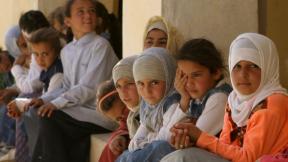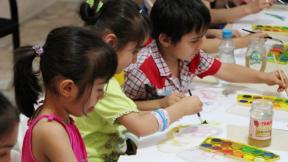
While summer is normally a time for leisure and vacationing, it shouldn't mean letting our guard down when it comes to various dangers.
Skin cancer, water safety and protection from severe weather are some areas we should be paying attention to. Below are some tips for handling some summer dangers.
1. Beware of the sun
While the sun is welcome change from cold, dark wintry weather, it can also be dangerous.
Skin burn and skin cancer are serious dangers to look out for during the summer. Stay out of the sun during some hours and properly protect your skin with to guard against skin cancer.
Also beware of heat exhaustion when the weather is particularly hot. In times like this, drink lots of fluid. However, people who have epilepsy or heart, kidney, or liver disease; are on fluid-restrictive diets; or have a problem with fluid retention should consult a doctor before increasing liquid intake.
Avoid too much physical activity, spending too much time in the sun or staying too long in an overheated place as these can cause heat-related illnesses. Know the symptoms of heat disorders and overexposure to the sun, and be ready to give first aid treatment.
For sunburns, take a shower, using soap, to remove oils that may block pores preventing the body from cooling naturally. If blisters occur, apply dry, sterile dressings and get medical attention. Sunburn symptoms are skin redness and pain, possible swelling, blisters, fever, headaches.
2. Make sure to play safe in the pool
If you decide to take your kids swimming at a public pool, make sure a lifeguard is present keeping a watchful eye on everyone. If you're at a beach, be even more vigilant. Lifeguards cannot obviously keep watch at all times.
In home swimming pools, prudence is even more necessary since you are the lifeguard, so be careful. One suggestion is to install four-sided isolation fencing around the pool with self-closing and self-latching gates to prevent direct access to the pool from a house and yard.
3. Practice bike safety
While bike riding is a staple of summer for many, it can lead to death and injury for those who aren't careful. Some rules for bike safety are:
1. Always wear a bike helmet. Most bike deaths are a result of head injury and helmets can help prevent this. Helmets should sit evenly between the ears and low on the forehead.
2. Ride your bike in a way cars know you are there. Wear bright colors or clothes that reflect light at night so cars, buses, and trucks can see you. Also, get a headlight for the front of your bike and "reflectors" on the front and back of your bike if you ride at night.
3. Follow bike traffic rules. Bikes have to follow the same traffic rules and signs as cars. You must ride in the same direction as the cars are going, ride your bike single-file, signal when you want to stop or turn, look out for holes, wet leaves, or cracks in the street which can make you crash your bike. As well, ride away from the curb in case a car pulls out or someone opens a car door suddenly. For additional information, contact the United States National Highway Traffic Safety Administration hotline at: 1-888-327-4236.
4. Practice food safety on the road
Picnics are a summer ritual. These are often held in locations outside major cities, an hour or more away, and in some cases, can become part of a camping trip. This is why food safety on the road is crucial. Here are some simple food safety rules:
a. Keep perishable food cool on longer trips
If you are traveling over 30 minutes with perishable food (i.e. met, poultry, eggs, salad), place it in a cooler with ice or freezer packs. Have plenty of ice or frozen gel-packs on hand before starting to pack food.
b. Pack food safely
Pack perishable foods directly from the refrigerator or freezer into the cooler. Meat and poultry may be packed while still frozen. That way it stays colder longer. Also, a full cooler will maintain its cold temperatures longer than one that is partially filled, so pack the remaining space with more ice or with fruit and some nonperishable foods like peanut butter.
Be sure to keep raw meat and poultry wrapped separately from cooked foods, or foods meant to be eaten raw such as fruits.
For longer trips, bring two coolers - one for the day's immediate food needs, such as lunch, drinks or snacks, and the other for perishable foods to be used later in the vacation.Keep the cooler in the air-conditioned passenger compartment of your car, rather than in a hot trunk. Limit the times the cooler is opened. Open and close the lid quickly.
c. Food safety while camping
Keep the cooler in a shady spot and covered with a blanket, tarp or poncho, preferably one that is light in color to reflect heat.
For drinking water, bring bottled water or other canned or bottled drinks. Always assume streams and rivers are not safe for drinking. If you plan to camp in a remote area, bring along water purification tablets or equipment, available at camping supply stores.
Keep hands and all utensils clean when preparing food. When planning meals, think about buying and using shelf-stable food to ensure food safety.
d. Don't keep food out in the heat
Perishable food sitting outside for more than two hours is not safe. For food safety, the time frame is reduced to just one hour if the outside temperature is above 90°F. Eating anything that has been sitting in the hot sun is an invitation for food borne illness.
For more food safety information call the toll-free United States Department of Agriculture Meat and Poultry Hotline at 1 (800) 535-4555. (in the US only).
5. Beware thunder and lightning
On average, the United States gets 100,000 thunderstorms each year. These are most likely to occur in the central and southern states.With growing heat and humidity, thunderstorms and lightning pose a serious danger. Some thunderstorms can be seen approaching, while others hit without warning. Some danger signs include dark, towering, or threatening clouds and distant lightning and thunder. Some safety tips in dealing with thunder and lightning are:
a. Keep disaster supplies at hand
These include a flashlight with extra batteries, a portable, battery-operated radio and extra batteries, first aid kit and manual, emergency food and water, essential medicines, non-electric can opener, cash and credit cards and sturdy shoes.
b. Check for hazards in the yard
These can be dead or rotting trees and branches that can fall during a severe thunderstorm and cause injury and damage.
c. Make sure all family members know how to respond after a thunderstorm
Teach family members how and when to turn off gas, electricity and water and teach kids how and when to call 9-1-1, police, fire department, and which radio station to tune for emergency information.
d. In the case of severe thunderstorms, find a safe place to stay
A severe thunderstorm watch is issued by the National Weather Service when the weather conditions are such that a severe thunderstorm is likely to develop. This is the time to locate a safe place in the home and tell family members to watch the sky and listen to the radio or television for more information.
A severe thunderstorm warning is issued when a severe thunderstorm has been sighted or indicated by weather radar. At this point, the danger is very serious and everyone should go to a safe place, turn on a battery-operated radio or television, and wait for the "all clear" by the authorities.
e. Lightning is a major threat during a thunderstorm
If you are caught outdoors, avoid natural lightning rods such as tall, isolated trees in an open area or the top of a hill and metal objects such as wire fences, golf clubs and metal tools.
As well, it is a myth that lightning never strikes twice in the same place. In fact, lightning will strike several times in the same place in the course of one discharge.
Photo Attribution - Gnumarcoo - http://commons.wikimedia.org/wiki/File:Rays_of_Sunshine.JPG








Comments
This is an excellent guide to all the the things we should be aware of during the summer.
Location
Add new comment